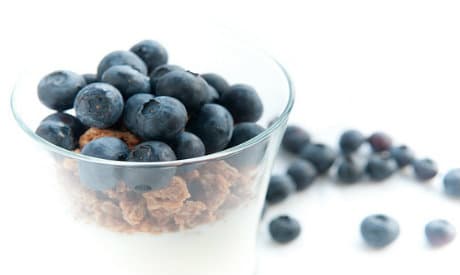
Over the past decade, we’ve become a culture of devout yogurt lovers. According to new studies, U.S. per capita consumption of yogurt has doubled in the past decade, while average yogurt consumption in Canada grew by 22 percent between 2005 and 2010.
So, why is everyone skipping to the grocery stores to load up on the calcium-loaded goo?
The trend owes much of its success, for one, to the growing popularity of Greek yogurt. Between 2006 and 2011, sales for Greek yogurt skyrocketed by 2500 percent, making it the fastest-growing segment in the yogurt industry. Consumer analysts also point to a trailblazing sector of youthful breakfast eaters who grew up on yogurt, while others say that a few select players in the food space have also stepped up to make it more tasty and flavorful.
A few, in fact, is a gross understatement. In the last three years, roughly 671 new yogurt products have hit the market, making it trickier for consumers to distinguish between what’s healthy and what’s plain junk food.
Here are a few rules to remember next time you’re staring at the sea of yogurt cups in the dairy aisle:
Rule #1: Limit The Sugar
If you lean toward the flavored variety, is actual fruit high on the list of ingredients, or is it topped by added sugars and “natural” flavors? If you run into the latter, experts say you’re likely just buying a yogurt product that contains a mixture of sugar and food coloring or vegetable juice. Probably not what you bargained for, right? There is a very persuasive case for plain yogurt: it contains roughly 55 percent fewer calories than fruit-added yogurt and no added sugar. Greek yogurt is also inherently lower in sugar because of how it’s processed. Remember, you can always add fresh fruit and even a teaspoon of honey to jazz it up.
Read more about the health benefits of Greek yogurt
Rule #2: As Far As Ingredients, Less is Best
According to nutrition experts like Dr. Sears, only a few key ingredients are necessary to make yogurt the healthful snack and breakfast food it is: milk and two live bacterial cultures. A few ingredients beyond that can be expected, but ditch any yogurt products with a running list of ingredients-especially added sugars (high fructose corn syrup), corn starches, and any you need to sound out to pronounce. (In case you are wondering, Dr. Sears recommends Stonyfield Organic Yogurts.)
Rule #3: Avoid “Heat Treated” or Pasteurized
This is a no-no. Avoid buying any yogurts that have been “heat treated after culturing,” which is a fancy way of saying that the yogurt was pasteurized after the healthy organisms were added, killing the live cultures and their healthful benefits. Heat treating extends the shelf life, thereby making it economically sound for yogurt makers, while consumers ultimately pay the price. Look for yogurts that contain “live and active cultures” to ensure you’re getting what you pay for.
Rule #4: Go For The Calcium
Yogurt is naturally a great source of calcium, a bone-strengthening and osteoporosis-fighting mineral. Aim for somewhere between 15 to 35 percent of the daily-recommended value, though the best yogurts provide between 35 to 40 percent in an 8-ounce container. Anything below 15 percent likely contains unnecessary fillers. Keep in mind that Greek yogurt will naturally contain less calcium than plain yogurt because it is strained to remove much of the liquid whey and lactose.
Rule #5: Look For Protein
If your exercise routine calls for more protein or just a filling snack, Greek yogurt is your answer. According to U.S. News Health Report, a typical six-ounce serving of Greek yogurt contains 15 to 20 grams of protein-the same amount in two to three ounces of meat. On the contrary, the same amount of regular yogurt offers just nine grams of protein.
Read about Whole Foods ditching GMO yogurt
Rule #6: Organic Is Your Best Bet
Remember, one of the starring ingredients in yogurt is dairy. Research shows that those who consume non-organic dairy products are more likely to have higher levels of toxins in their bodies. Factory farm cows are fed antibiotics to keep them healthy and injected with growth hormones that make them grow faster. By law, organic dairy cows certified by the USDA are fed organic, GMO-free feed and cannot be treated with synthetic hormones or antibiotics. Therefore, your body and those of your children, have more nutrients, antioxidants and omega-3s-the latter of which is essential to child brain development.
Image: Pen Waggener




